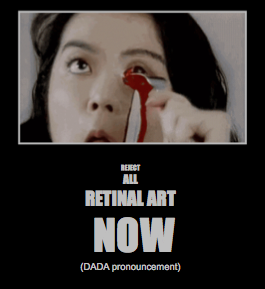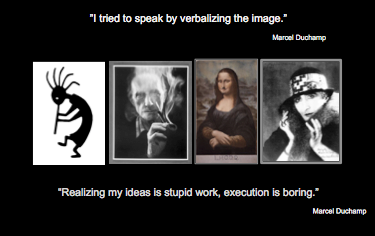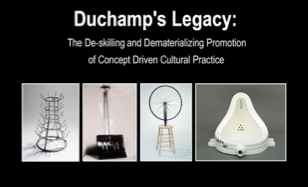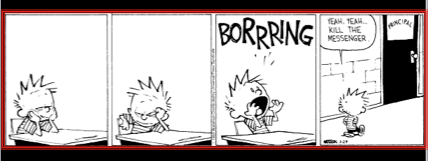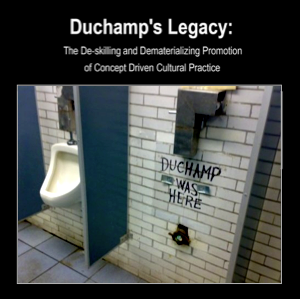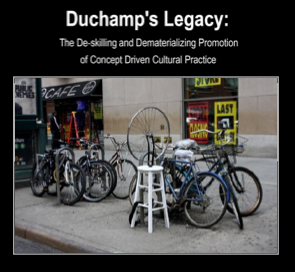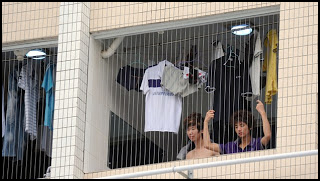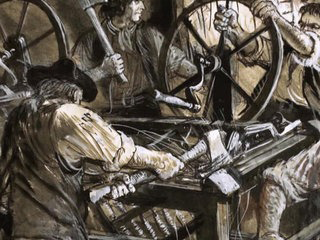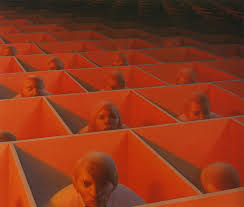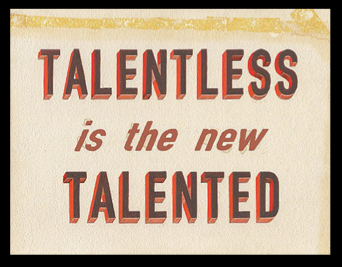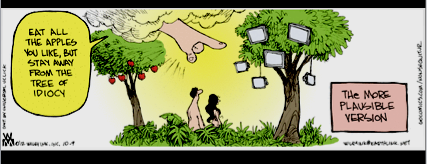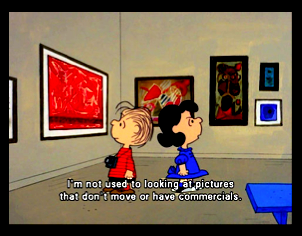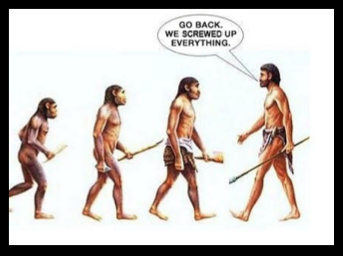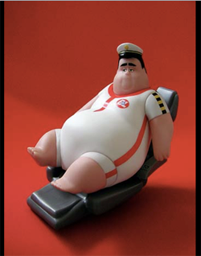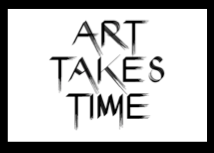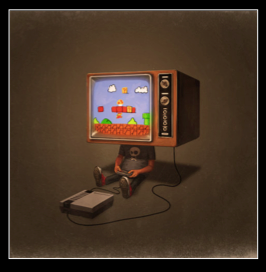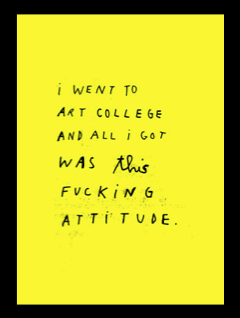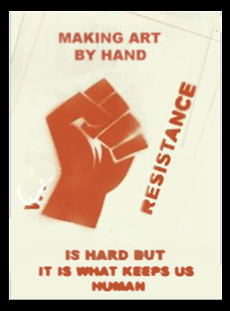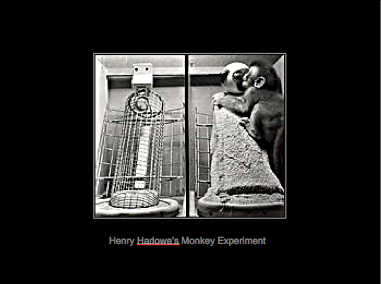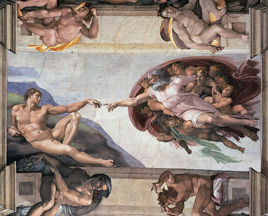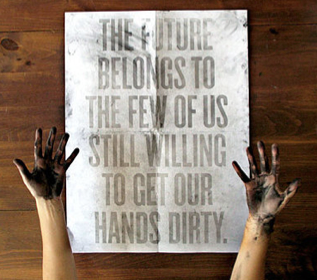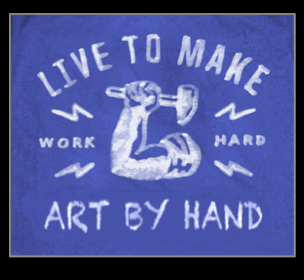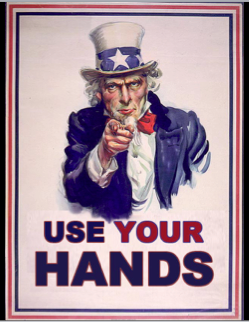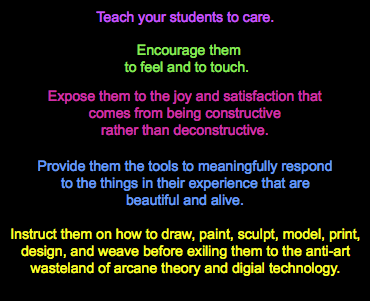 |
||||||||||||||||
 |
||||||||||||||||
 |
||||||||||||||||
| Paper delivered by Brian Curtis, Associate Professor, University of Miami, Coral Gables, Florida at the SECAC Conference in Durham, North Carolina, October 18. 2012 for a panel titled "Slow Media: The Advantages (?) of Learning to Make Art or Design Objects by Hand”, Chaired by Maureen GarvinSavannah College of Art and Design, Savannah, Georgia | ||||||||||||||||
|
The digitally saturated world that we inhabit is causing shorter attention spans, diminished interpersonal communication skills, and a marked reduction in our ability to think deeply and abstractly. I base this statement on a rapidly growing body of empirical evidence that I will be discussing in a moment that indicates that the Internet serves as a profoundly disrupting mechanism that produces a decidedly destructive impact on our aesthetic judgments, our social relations, our personal and societal ethics, our economic and political freedoms, and our intelligence.
I am also here to offer what I believe is a sorely needed critique of the increasingly widespread trend in art departments across our country and around the world to redefine and reshape art in terms of art market fashion, digital technology, Duchampian absurdities, and arcane postmodern philosophical abstrusiosities and to offer in its place a carefully reasoned, life-affirming educational alternative that emphasizes self-discipline, heightened perception, skill acquisition, craftsmanship, and in the innate importance of working with our hands.
But before addressing the dangers of digital technology and examining the shortsighted changes in art pedagogy let us first take a broad look at the historical events that have created the post-industrial consumer society in which we find ourselves. We live in a market driven, global, corporation dominated, technology fueled, television mediated, hyper-consumer society that is built upon a theory of perpetual economic growth that is clearly politically, economically, and environmentally unsustainable. Begun by advances in air travel but put on steroids by digital technology the phenomenon known as Globalization is causing workers’ wages to stagnate, exacerbating disparity in the distribution of wealth, and expanding worker alienation.
If you think this characterization of the modern workplace to be extreme I would call your attention to the fact that Foxconn Corporation has had to install suicide nets around the dormitory for workers at their industrial complex in Shenzen, China as a means of controlling the disturbingly high number of suicides that the inhumane working conditions at that facility have triggered.
The dehumanizing nature of the assembly line work in question, as I am sure you are aware, is not a new phenomenon. It has roots that go back to 1811, the dawn of the Industrial Revolution and the labor uprising known as the Luddite Rebellion.
The lingering historical importance of that event stems from the fact that when the Luddite Rebellion was forcefully crushed by the British government the principle that industrialists have the right to impose new technology anywhere and at any time without any process of negotiation regardless of its impact on the workers or on society at large became law. This principle is alive and well and shapes the quality of life, or lack thereof, in the 21st Century. The early days of the Age of Enlightenment correspond to the early days of industrialization. Enlightenment philosophers celebrated reason, progress, and the improvement of man’s material circumstances but also voiced dismay that industrial mechanization demeaned the importance and dignity of manual labor. The Enlightenment spoke out for the ethical equivalent of manual labor with intellectual pursuits. This position was most clearly articulated in The Encyclopedia or Dictionary of Arts and Crafts (a set of volumes nearly six feet thick) edited by Denis Diderot in 1751 which argued that manual workers were to be admired for their skill, energy and quality work. Fifty years later John Ruskin, an art writer and social critic who was instrumental in the promotion of pro-labor underpinnings of the Arts and Craft Movement continued the Enlightenments defense of the importance of “healthy and ennobling labour.”
Now we find ourselves being swallowed into a post-industrial knowledge economy rooted in digital technology. And in a manner similar to the social disruptions caused by industrializations and its spawn, the consumer driven economy, the so-called knowledge economy is exerting even more profound cultural pressures that are leading to the disintegration of the economic, social, emotional, and intellectual stability communities throughout the world.
Again, for those who might suggest that I am channeling Henny Penny of ‘the sky is falling’ fame, let me remind you of the 2011 events at the Fukushima Daiichi nuclear power plant and the maxim that all technologies contain unintended downsides.
While the downside of digital technology is nowhere near as dramatic and immediate as a catastrophic nuclear meltdown, there is a growing number of experts who believe that, in the long run, the fallout from digital technology is likely to have far greater, long-term societal implications.
The current wave of techno-utopianism is fueled by governmental and corporate hucksterism in support a marketing-saturated, hyper-consumer society. Is it any wonder then that corporations and their paid-for-politicians continue to ignore thoughtful analysis of the data that links computer usage to serious disruptive changes in education, societal ethics, the economic lives of millions, the fabric of human culture, and the rights, privacy, and security of individuals?
As early as 1995, Richard Sclove, author of Democracy and Technology predicted a “cybernetic Walmart” whereby Internet commerce would dominate every sector of the economy, undermining democracy by eliminating small business, and weakening our sense of community. Currently, the Internet is dominated by an oligarchy of online mega stores that controls Internet commerce. Small brick and mortar community businesses, the bedrock of a free-market economy, are being forced to close their doors. Additionally, major cultural industries are being decimated; music, publishing, movies, newspapers, and radio and TV broadcasting are all losing out to the Internet and there is solid evidence that the profit from this cataclysmic market shift only benefits a handful of individuals because the web does not create jobs in the place of those it destroys.
Jerry Mander, a former director of the International Forum on Globalization, described the ultimate goal of economic globalization as the creation of a corporate monoculture. Currently more than 70% of global information (film, books, newspapers, entertainment imagery, and Internet outlets) is controlled by seven global media corporations whose declared motivation is to protect corporate interests, increase profits, and expand market share. These seven media mega-corporations represent the greatest concentration of ownership in any industry. Unfortunately, the mass conformity that results from this corporate mass communication has been shown to weaken the publics’ judgment, erode their independent spirit, and reorganize the modern personality on a predicate of passive consumption”.
Even more troubling is the disruptive influence the Internet has been documented to have on human intelligence. In an article published in early 2009 in Science, prominent developmental psychologist Patricia Greenfield reviewed more than 40 studies of the effects of various types of media and concluded that the Internet and related screen technologies are “weakening our capacity for the kind of “deep processing” that underpins “mindful knowledge acquisition, inductive analysis, critical thinking, imagination, and reflection.”
Nicholas Carr’s 2010 book, The Shallows: What the Internet is doing to Our Brain,” documents neurological research on learning and memory that indicates that we learn best “when senses and thoughts are concentrated.” The behavior that best promotes this kind of concentration is slow reading from a book or interacting with the physical world as in working with ones hands. Overloading our cognitive capacity consistently results in diminished comprehension and blocks the brain’s ability to form the associative neural links that we call intelligence. Internet usage promotes a state of permanent distractedness that damages our capacity for concentration, contemplation, and reflection. What we are witnessing are minds consumed by a medium. Using the Internet impedes deep learning and thinking.
Carr points out that the Internet’s cognitive overload also disrupts emotional development. Empathy and emotion maturity have been shown to develop most intensely when the brain processes data slowly. As the Internet reroutes our neural pathways and diminishes our capacity for contemplation it is altering the depth of our emotions as well as our thoughts. Being deprived of concentration and empathy are a proven recipe for becoming less human.
In September of 2012 a Duquesne University study in the Journal of Business Ethics entitled Moral Reasoning in Computer-Based Task Environments found that “technology in enabling negative behavior” and diminishing the subjects use of principled moral reasoning” and that “rogue online behavior doesn’t just pertain to academics.” The author of this study now wonders whether “science has outpaced the ability of society to adapt.” “If it’s online, is it cheating? Cheaters don’t think so”
Despite the devastatingly negative social, political, economic, cultural, and educational implications mentioned above institutions of higher learning are among the worst offenders for promoting ever expanding uses of digital technology. Making matters worse is the fact that a preferred engagement with virtual reality institutionalizes the preference for concept over percept by actively amplifying higher education’s long-standing privileging of rational intellectual pursuits over the intuitive insights that are generated by hands-on activities. While admittedly this ‘sterilization’ of the perceptual has roots dating back to Plato’s idealism, the current institutional climate that fosters antagonism between visual and verbal forms of knowledge has all but forced art departments to abandon the long-standing, intuitive understanding that there are non-verbal ways of communicating that are essential. Richard Sennett reflected the essence of the non-verbal communicating in his book, The Craftsman, with the phrase “Making is thinking.”
Making things in the physical world requires touch. The ancient philosopher Anaxagoras understood the importance of touch and its relationship to thinking when he said “It is by having hands that man is the most intelligent of animals.” Touch has long been understood as a major component of what makes us human. In the 1950’s the psychologist Harry Harlow conducted studies of the effects of touch deprivation on infant monkeys. He put a wire frame “surrogate” mother with a milk bottle in one cage and a wooden mother covered in terrycloth without a milk bottle in the other. The infant monkeys clung desperately onto the terrycloth mothers for hours, ignoring the desire for food in exchange for the softness of the terry cloth. The touch-deprived monkeys in Harlow’s studies all experienced stereotypic developmental and behavioral abnormalities. These monkeys engaged in self-clasping and rocking behaviors and were disinterested in their environment. They avoided socializing with other monkeys, were timid, and disliked being touched. When they did interact with other monkeys they were very aggressive, had difficulty finding sexual partners, were often unable to mate properly, and regularly abused their mates and offspring . Recent experience with the severe emotional problems of children adopted from Eastern European orphanages where there is little human contact reinforces the fact that humans, too, thrive on touch.
Working with our hands makes us more human. Art training based in manual skill acquisition and traditional aesthetics provides that. Hands-on training requires a student to look deliberately, look intensely, seek meaning in experience, and pursue a state of complete awareness of what it is that they are accomplishing in the physical world. From a Darwinian perspective, as outlined by Denis Dutton in his book, The Art Instinct, the above pedagogical model springs from an innate human predisposition to value objects that required specialized skill in their making, that provide direct sensory pleasure, that require a decoupling from practical concerns, logic, and rational understanding, and that acknowledge their place in the longstanding traditions of art.
To further complicate matters, the curriculum innovations that are being adopted at art programs across the country are most often based upon popular-media hype, digital hucksterism, unsubstantiated facts, poorly reasoned premises, and/or arcane philosophical abstrusiosities. Since history clearly illustrates that innovations can be disastrous it behooves us carefully weigh the importance of what is being sacrificed before continuing down the path of so called ‘innovative’ curricula. It is a flawed misinterpretation of the maxim that “those ignorant of history are condemned to repeat the mistakes of the past” to suggest that history is only a repository of failed ideas. A corollary maxim reminds us that “those ignorant of the past are condemned to an infinite loop of having to rediscover the wheel” and if that eventuality actually does come to pass please understand that it will be a craftsman using his hands who reinvents the wheel.
Because all humans inherit a common central nervous system at birth it is of utmost importance that we structure foundations curricula around our shared perceptual mechanisms so as to provide our students with a understanding of the design elements, principles, and manual skill training that constitute a well-balanced studio foundation.
To counter the de-humanizing trend in our conceptually oriented, digitally dominated learning environments it is our responsibility to actively defend the value of hands-on training in traditional media. Touch is the cornerstone for direct sensory experiences from which artistic intuition is derived. Taking care and doing one's best provides the means to heighten and make more significant personal and collective experience. The craft of art is active engagement with an external reality while pursuing the shared goal of excellence. Developing intuitive understanding of the pursuit of quality through concentrated manual tasks can’t be downloaded it can only be lived. Slow media training is essential.
Let me close with a heartfelt exhortation, “Teach your students to care, Encourage them to feel. Demonstrate the joy and satisfaction that comes from being constructive rather than deconstructive. Provide them the tools to actively respond to the things in their experience that are beautiful and alive. Instruct them on how to draw, paint, sculpt, model, print, and weave before exiling them to Cyberspace and the anti-art wasteland that dominates so much of contemporary cultural practice.
|
||||||||||||||||
| SITE INDEX | ||||||||||||||||
| email: brian_curtis@mac.com | ||||||||||||||||
| University of Miami Faculty Webpage | ||||||||||||||||
| last updated 05/31/2016 | ||||||||||||||||
